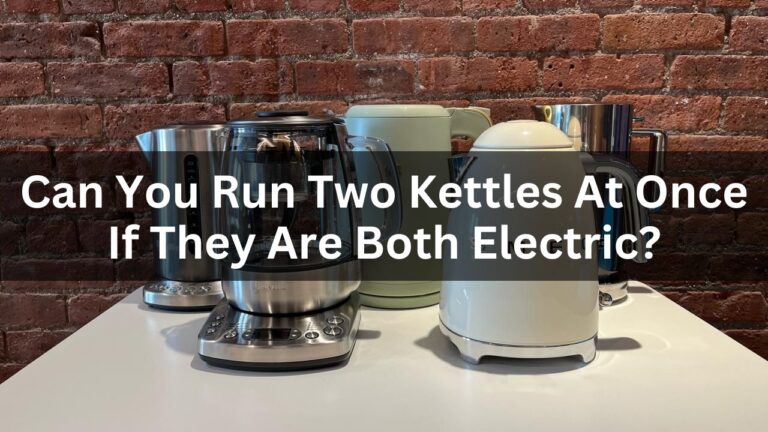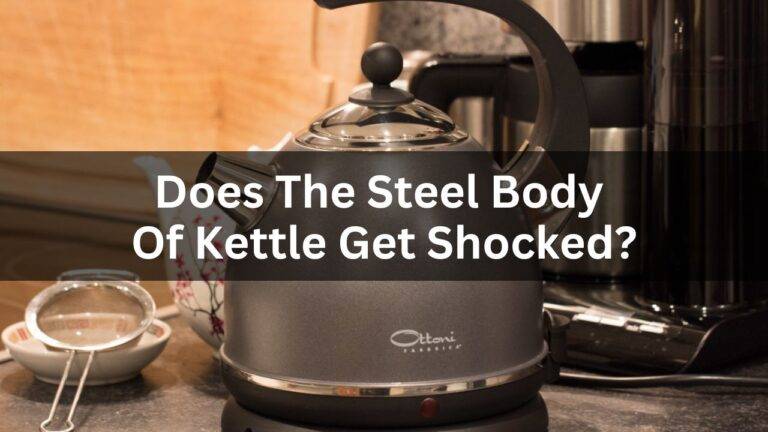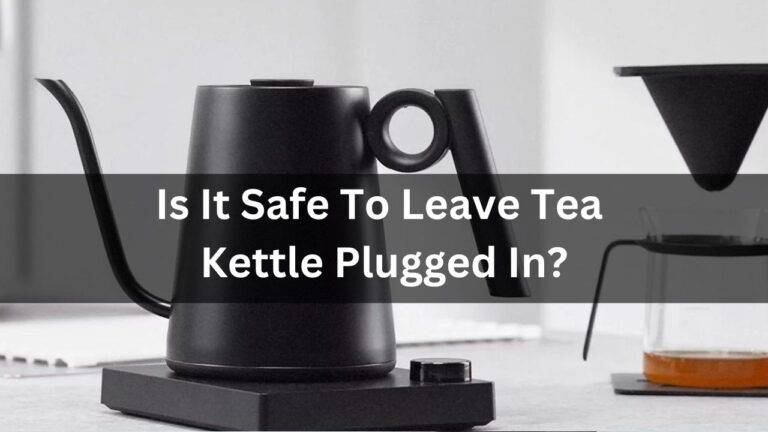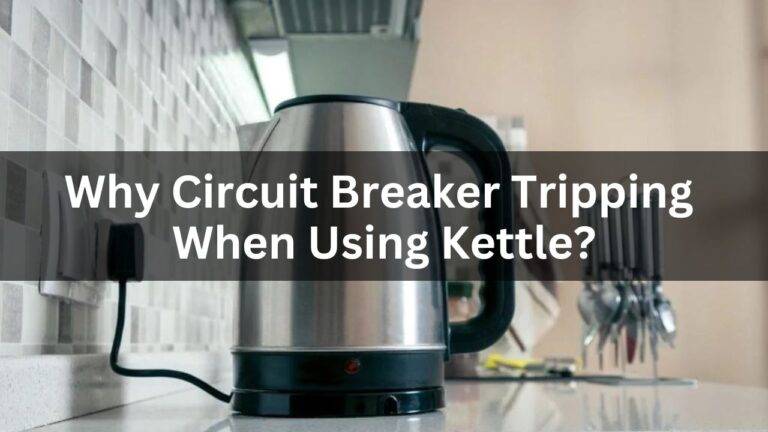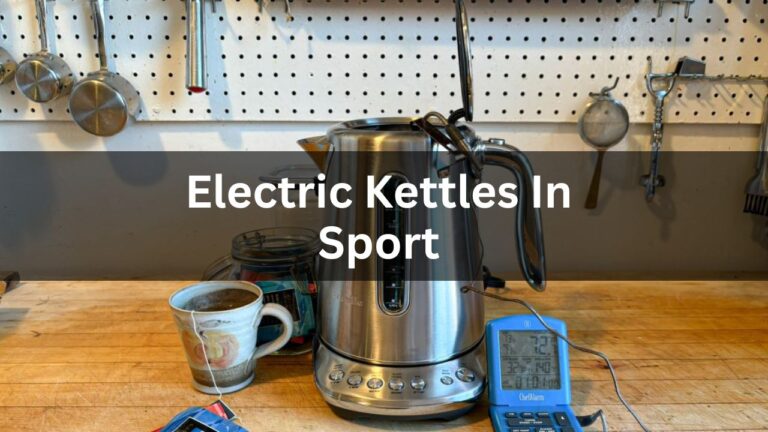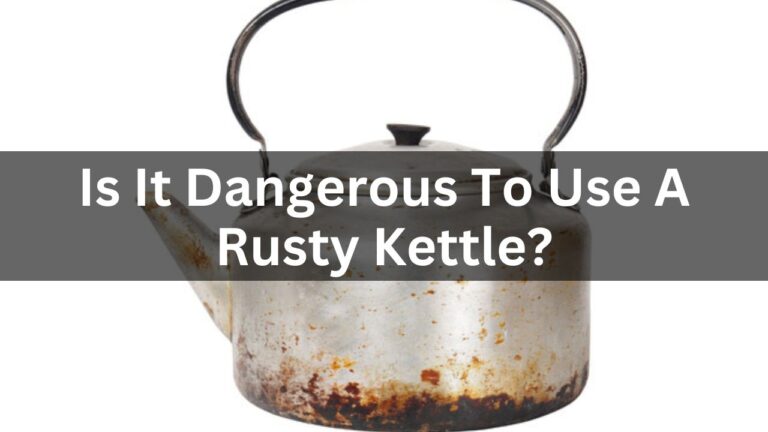How Do I Get Rid Of The Plastic Taste From A New Electric Kettle?
Have you bought an New Electric Kettle but now you are tired of its plastic taste? And you don’t know how to get rid of it. There is absolutely nothing to worry about.
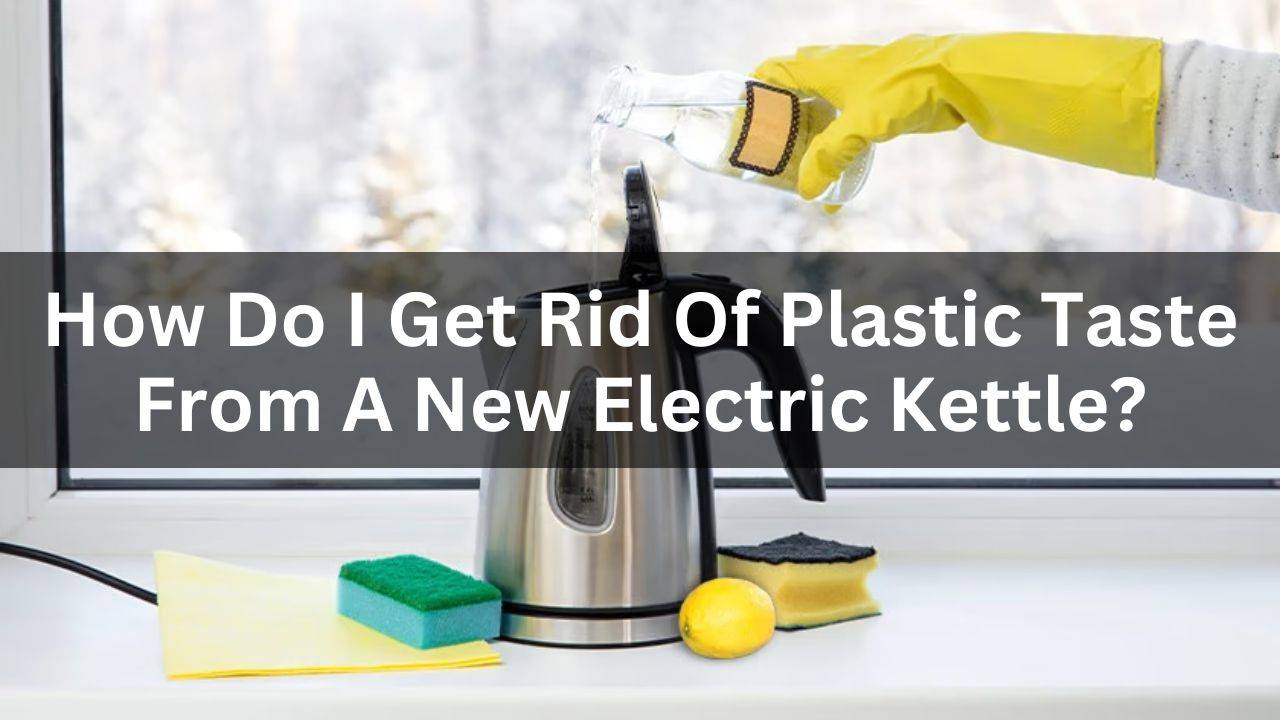
Have you bought an New Electric Kettle but now you are tired of its plastic taste? And you don’t know how to get rid of it. There is absolutely nothing to worry about. It is very normal to get such a taste from a freshly bought electric kettle.
You can use many methods to get rid of this plastic taste. This happens frequently when a kettle is fresh. You should wash your kettle with fresh water before using it.
You can use baking soda, vinegar, lemon, or salt to get rid of this plastic flavor. This taste can be due to the reaction of water with coatings like stabilizers, colorants, and antioxidants on plastic.
If you want to know the detailed methods to get rid of this taste, then you should read this article completely. You can also get the reason for this taste after reading this article.
Contents
Removal Of Plastic Taste By Using Vinegar:
The plastic taste isn’t as big of an issue in the newer electronics. You can remove it by using many things present in your kitchen. The following steps help you in removing the plastic taste.
- Firstly, you should add ¾ cup water to your new kettle.
- Secondly, turn on the electric kettle and bring it to a boil at least three times.
- Empty your kettle every time and refill it with water.
- Thirdly, add ¼ cup of vinegar to it, boil it, and leave it for 20 minutes. You can leave it overnight.
- After that, wash it with clean water.
- If it does not clean the kettle properly, you can repeat this process.
If vinegar isn’t available, you can substitute it with lemon. Because vinegar and lemon function in the same way. You can use a mixture of both.
Also Read: Is It Dangerous To Boil Water In A Plastic Electric Kettle?
Removal Of Plastic Taste By Using Baking Soda:
Before using any method you must boil and rinse the kettle at least three times.
If the smell still does not go away, then use vinegar, lemon, or baking soda.
- Take off the filter from your kettle.
- Then add 3/4 of the water and bring it to a boil.
- After it boils, stir in two tablespoons of baking soda.
- And let it sit overnight. If any bicarbonate soda residue remains, discard the water.
- Boil again a few times until the plastic taste goes away.
Most of these tastes go away in one go. As baking soda is an alkali, it completely neutralizes acidity and, as a result, gets rid of a variety of distinct odors and tastes.[1]
Also Read: How Do You Prevent Kettle From Temperature Swings?
Removal Of Plastic Taste By Using Salt:
Many people believe that you can remove the funny taste from your electric kettle with salt. I know this surprised you.
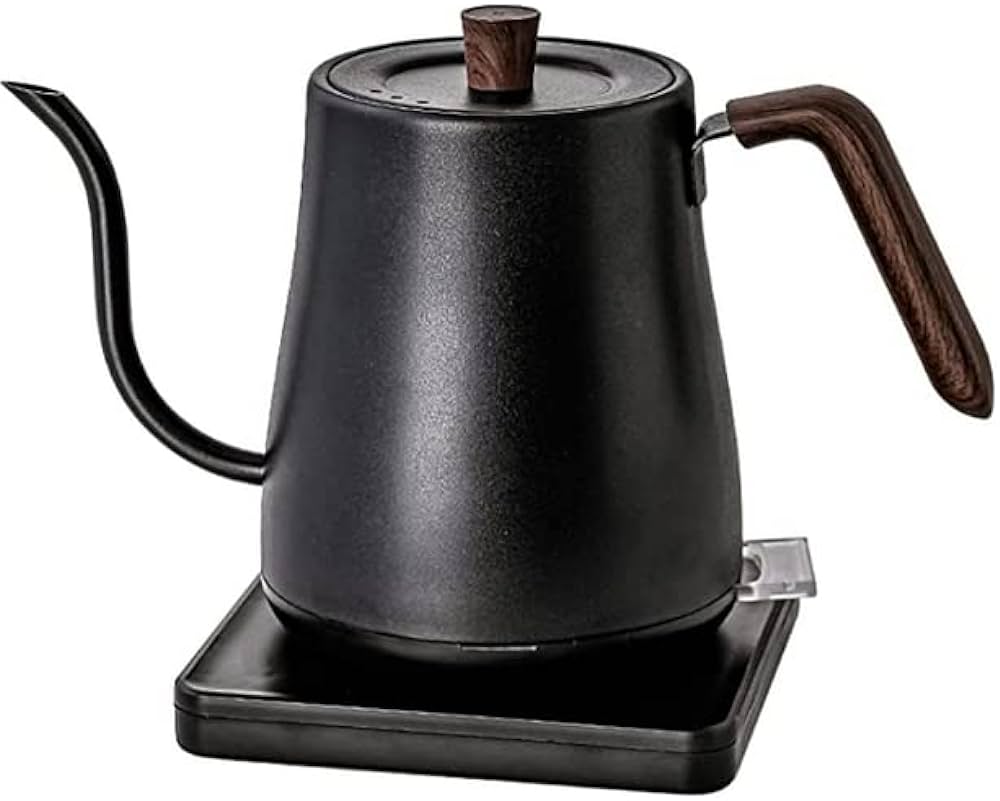
But salt can really prove effective in getting rid of plastic flavor from new kettles. The procedure is the same as above, but in this case, you will use salt instead of vinegar, lemon, or baking soda.
- Wash your kettle three times with fresh water.
- Add water to your kettle.
- Then add one to two teaspoons of salt in it.
- Bring it to a boil and wash it with fresh water.
Salt can also remove stuck-on food particles and grime buildup because it has an abrasive nature. It is also an effective absorber that’s why it is used to absorb plastic flavor from a new electric kettle[2]
Why Does A New Electric Kettle Give Plastic Flavor?
Most electric kettles are made of plastic or some parts of them must be made of plastic like handles and rubbers of ceiling. When the packaging of plastic products is overly airtight and hermetically sealed, an unwanted odor frequently stays.
Chemical additives used in plastic syntheses, such as stabilizers, colorants, and antioxidants, give the substance a taste or odor. This is why plastic has a flavor. For this reason, when we drink water from a new electric kettle it gives plastic flavor.
Sometimes, this flavor is due to TCP. When some materials, such as some plastic components of kettles, react with chlorine in the water, a TCP taste or odor may result. This new flavor can go away by washing.
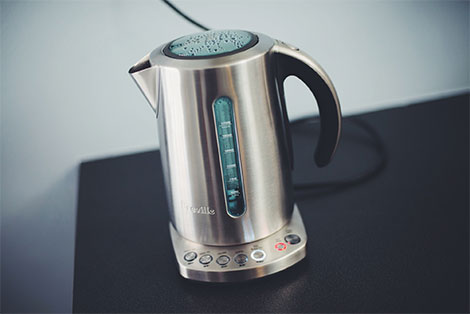
If this taste doesn’t go away with any method and comes again and again. Then it might be possible that the plastic in the kettle has already reached the end of its useful life. It is starting to break down gradually, dissolving in water.[3]
Also Read: Can I Put Cold Water In An Electric Water Kettle?
Conclusion:
After reading this article, you must have realized that such a flavor of a new electric kettle is not a big deal. This flavor can be caused by the kettle being tightly closed.
It can also be due to coatings on plastic. Simply boiling water in your kettle can remove this taste. If this flavor doesn’t go away then baking soda, vinegar, or lemon can help you to remove this plastic taste.
If the taste does not go away even after repeated washing then you should check its material. Because low-quality plastic releases toxic chemicals at high temperatures. This can also be a reason for this flavor.
FAQs:
Q: What Should We Do Before Using A New Kettle?
A: Don’t use your new kettle straight away. Always clean your kettle before using it. You should always read the guidelines. Then boil water in it thrice and empty it every time. You can also use soap to clean it thoroughly.
Q: Can I clean the kettle with salt?
A: Yes, you can clean the kettle with salt. Salt can remove bad smell, taste, and stain of food from a kettle due to its mild abrasive nature.
You should cut a lemon in half, and dunk it in salt. Then use the halves to wipe the exterior of a tarnished copper tea kettle until it shines again.
Q: Is it possible to use a new kettle right away?
A: One of the first things to do with a new kettle is to either fill it with water, bring it to a boil, and then dispose of the water. This makes it more likely that your kettle will be spotless and prepared to assist.
Q: Why does my new electric kettle have a plastic taste?
A: The plastic taste in a new electric kettle may be due to residues from manufacturing processes or packaging. It’s common and can be addressed with proper cleaning.
Q: Is the plastic taste harmful?
A: The plastic taste itself is generally not harmful, but it can affect the flavor of beverages. Eliminating the taste ensures a more enjoyable and safe user experience.
Q: Why does my new electric kettle have a plastic taste?
A: The plastic taste in a new electric kettle is often due to residues from the manufacturing process or packaging materials. It’s a common occurrence and usually temporary.
Q: Can I use other substances to eliminate the plastic taste?
A: Yes, you can use alternative solutions like lemon juice or baking soda mixed with water. Follow the same process of boiling, soaking, and thorough rinsing.
Q: How many times should I repeat the cleaning process to remove the taste?
A: Repeat the cleaning process until the plastic taste is no longer noticeable. This may take a few cycles, depending on the severity of the taste.
Q: Can I use a different method to remove the plastic taste?
A: Some people find success by boiling water with a few slices of lemon or baking soda. Allow the solution to sit, discard, and rinse thoroughly.
Q: Is it safe to use the kettle if it still has a slight plastic taste?
A: While a slight plastic taste may not be harmful, it’s advisable to continue the cleaning process until the taste is fully eliminated before using the kettle for preparing food or beverages.
Q: How long should I let the cleaning solution sit in the kettle?
A: Allow the cleaning solution to sit for at least a few hours, or overnight if possible. This gives the solution time to break down and remove any residual plastic taste.
Q: Can I use commercial descaling solutions for this purpose?
A: Commercial descaling solutions are primarily designed to remove mineral deposits, not plastic taste. It’s recommended to use solutions like vinegar or lemon juice specifically for this issue.
Q: Should I clean other parts of the kettle, such as the lid and spout?
A: Yes, clean all parts of the kettle, including the lid and spout, to ensure thorough removal of any residual plastic taste. Follow the manufacturer’s cleaning instructions for specific parts.
Q: Will the plastic taste go away on its own with regular use?
A: While regular use may help diminish the plastic taste over time, actively cleaning the kettle with solutions like vinegar or lemon juice will expedite the process and ensure thorough removal.
Q: Can the choice of plastic material in electric kettles impact safety considerations, and are there certain plastic types that users should avoid to minimize potential health hazards?
A: Discuss how the choice of plastic material in electric kettles may impact safety and highlight specific plastic types to avoid for minimizing health hazards.
Q: Why does my coffee taste bitter even when using high-quality beans?
A: There are several factors that contribute to the bitterness of coffee, including the grind size, brewing time, and water temperature. Experimenting with these variables may help improve the taste.
Q: What causes condensation inside my refrigerator, and how can I prevent it?
A: Condensation inside a refrigerator can result from warm or moist air entering when the door is opened frequently. Ensuring a proper seal, avoiding wet food storage, and using a dehumidifier can help prevent excess moisture.
Article you might be interested:
Do You Use Bottled Water To Boil The Kettle?
Does The Steel Body Of A Kettle Get Shocked?

